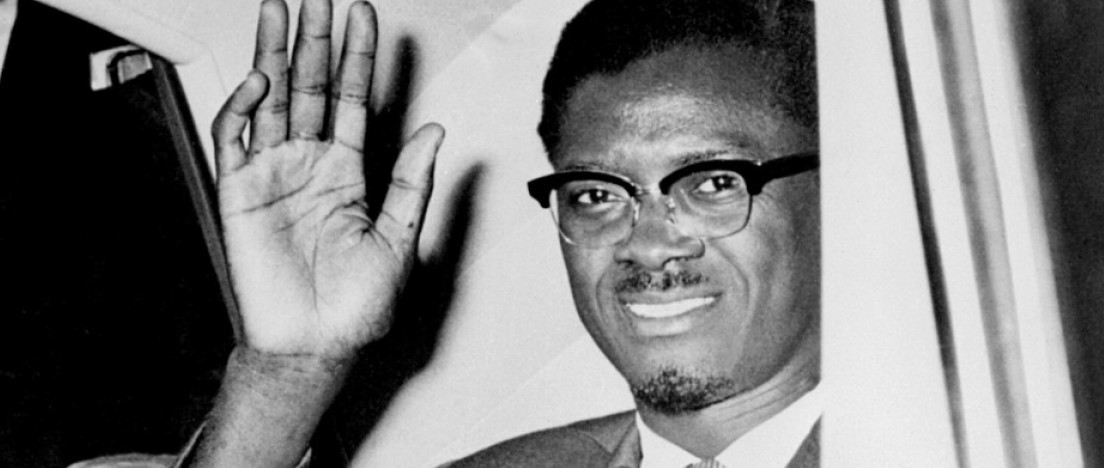After the 1960’s and a spate of assassinations, leaders (with a few exceptions) have never really been able to lead again. And it seems it all started with Patrice Lumumba – the first legally elected prime minister of the Democratic Republic of the Congo. (I am presently in Cape Town – hence my focus on Africa.)
He was assassinated on 17 January, 1961, and (as reported in The Guardian) ‘this heinous crime was a culmination of two inter-related assassination plots by American and Belgian governments, which used Congolese accomplices and a Belgian execution squad to carry out the deed’.
The West is in the belief that they hold the lantern of democracy – but they blew out the flame a long time ago. This is a short extract from Lumumba’s Independence speech:
“…Together we shall establish social justice and ensure for every man a fair remuneration for his labour… We shall see to it that the lands of our native country truly benefit its children. We shall revise all the old laws and make them into new ones that will be just and noble. We shall stop the persecution of free thought. We shall see to it that all citizens enjoy to the fullest extent the basic freedoms provided for by the Declaration of Human Rights…”
He spoke of the struggle against the colonizers – and today we could just replace colonizers with global multinationals. He was not good for business, and thus his arrest was”orchestrated” in November 1960 and assassinated in January 1961.
This seemed to embolden prime ministerial and presidential assassinations.
As Americans remember what they were doing the day JFK was shot in 1963, I can recall the day at school (in Pretoria) when we were informed prime minister Dr Hendrik Verwoerd had been assassinated.
There are some chilling similarities to the Kennedy assassinations.
Dr Hendrik Verwoerd
Verwoerd – known as the “Architect of Apartheid” – was assassinated in Cape Town after entering the House of Assembly at on 6 September 1966. A uniformed parliamentary messenger, Dimitri Tsafendas, stabbed Verwoerd in the neck and chest four times before being subdued by other members of the Assembly.
The ‘loner’ narrative.
Even though a medical doctor in the House who attended to Verwoerd afterwards said “The assassin must have received training in the art of wielding a knife”, the “lone wolf” scenario (like Harvey Lee Oswald and Sirhan Sirhan) was quickly rolled out.
On the 7th of September, one day after the assassination, “The Star” (Johannesburg) had a headline: “No sign of assassination plot. This was the work of a lone killer, says Vorster”.
John Vorster was appointed as successor to Verwoerd. And like President Johnson establishing the Warren Commission, Vorster quickly appointed his own commission of enquiry – consisting of ONE MAN – who found that there was “no ground for the rumour that the wounds had been inflicted by an expert”.
At the time I was a kid, and my parents (who were very anti-apartheid) never questioned the lone assassin narrative. Why would one – many despised Verwoerd.
Assassin Dimitri Tsafendas
Dimitri Tsafendas was of Greek descent and joined the South African Communist Party in the 1930s. He became a seaman in the merchant marine in 1941, then spent the next 20 years travelling. He began to experience psychotic episodes that resulted in short periods of institutionalisation in various countries, including 6-month detention on Ellis Island where he was diagnosed as schizophrenic.
He could speak 8 languages, and upon his return to South Africa, he worked for a time as a translator. Although classified white, Tsafendas was shunned in white circles because of his dark skin. He had applied for reclassification from “white” to “coloured” but his application was turned down.
Like the lapse in JFK’s security, one can only wonder what happened in Cape Town. John Vorster was the Minister of Justice, and therefore of Security. And Hendrik Johan van den Bergh (who was close to Voster) was chief spymaster of the apartheid state and famous for founding of the Bureau of State Security (B.O.S.S.).
In Mike Smith’s political commentary blog: In 1966, Tsafendas, at the age of forty-eight, obtained a temporary position as a parliamentary messenger. One month later, when Verwoerd made his way to his seat, Tsafendas approached, drew a concealed knife, and stabbed the doctor about four times in the torso. He had no plan for escape and was easily apprehended.
The press reported that the Security Police had a file on Tsafendas – but Smith claims the Security Police had no less than FOUR files on Tsafendas. Apparently two were destroyed without authority and a third was missing.
It seems improbable that at that time a coloured skin person with several secret files would be “allowed” near the prime minister – especially in a government paranoid by the “swart gevaar” (the black threat).
Like JFK who spoke out against secret societies and signed the Executive Order 11110 to issue interest free loans – Dr Verwoerd, too, was putting the screws on big business and big banking.
The Hoek Report
Verwoerd launched an inquiry into “Die Georganiseerde Geldmag” (The Organized Money Power) known as “The Hoek Report”. Smith writes: Professor Piet Hoek was asked to investigate the stranglehold that economic monopolies such as Anglo American (the Oppenheimers, mining), Rembrandt (Anton Rupert, liquor and cigarettes) , Trust Bank (Jan Marais), Sanlam (A.D. Wasenaar, insurance), etc were holding.
This report was finished after Verwoerd’s death and Vorster refused to publish it. Parts of it leaked out in 1969. Hoek found that Anglo American Corporation, the largest private group in the economy, was large enough to frustrate government policies and should be brought under much stricter control. Anglo’s Harry Frederick Oppenheimer (1908 – 2000) had ties with the Rothchilds, and had emerged (like Rhodes) from diamonds becoming one of the world’s richest men.
It is alleged (here) that Oppenheimer lobbied the Rothschilds to overthrow Verwoerd, and in a book called “South Africa Inc.” by Pallister, Stewart and Lepper, 1987, it states that “Oppenheimer, in fact, was able to develop cordial relations with Vorster”.
I have also read claims that the nationalisation of the Reserve Bank was top of Verwoerd’s agenda – and that this may have been responsible for his murder – but I have absolutely no sources for this.
There is much more on the Verwoerd story, but what is interesting is the repetition of the same ‘patterns’ over and over again (this includes false flags). It looks like the assassination of several leaders in the 1960’s was “just the cost of doing business”.































I think Prince Albert was assassinated, via disease. He died in 1861 at age 42, leaving his widow Queen Victoria with 9 children. She stayed on the throne for 40 more years in a famed state of mourning.
I have zero evidence for this hypothesis, but, as Dalia says, when somebody is “uncooperative” they get bumped off. After his success with Expo, Albert was feeling his oats. Even royals are not allowed to feel their oats.
If I am right, maybe Victoria knew the score, and the mourning thing was a combination of shock, anger, and grief.
Ahem. I have been waiting over 24 hours for someone to clobber me for my Prince Albert claim. No takers. OK, then here’s another one.
I suspect David Lloyd George’s beloved daughter Mary, age 28, died of foul play rather than of appendicitis. Lloyd George, a Welshman, was UK prime minister from 1916 to 1922. Had many a far-out idea. To kill him would be too obvious, but to demoralize him with a death in the family would have not aroused anyone’s suspicions.
Sure I know it may have been appendicitis. But I could swear I see it happening all the time — a strong person loses a family member (or his child or spouse becomes disabled) and he then has to deal with all that instead of being a troublemaker.
As I said about Queen Vic, one wonders if people like that have insight into what happened, though they would probably suppress it.
THE PLOT THICKENS.
I decided to Google “Life of Lloyd George” so that Wiki would not come up first. Lo and behold i got this, and will hunt for the DVD:
“The Life Story of David Lloyd George was written by Sidney Low. The film’s release was much anticipated, and the film press carried impressive advertisements for it in late 1918. However, in December 1918, all the advertisement stopped, following an attack in the influential paper John Bull by its owner, the infamous MP Horatio Bottomley, who claimed that the Rowsons, because they had changed their last name and had employed some foreign-born extras to play soldiers in the film’s war scenes, had less than patriotic motives for making the film.
The Rowsons started the process of suing him for libel, but were shortly afterwards informed that Lloyd George, who initially had supported the production of the film, no longer wanted it shown. Solicitors, presumably acting for the government or for Lloyd George’s Liberal party, visited the film company, paid £20,000 in cash (a very high figure at the time), and walked away with the negative and the only print. The reason why Lloyd George took this action is still unknown, but is the subject for much speculation.
Long believed destroyed, the film was rediscovered in the Lloyd George family archives in 1994. The film had its world premiere in Cardiff in 1996. A DVD is available.
Consider how vulnerable a good leader is. I can’t say if Lumumba was good or not, as I haven’t inspected his work. But there are always outside forces willing to kill off a leader in any country who looks like he might set up a brilliant system for his people. To me this recommends that nations should protect their leaders. How about a Committee of Five Clones, so that if a leader is killed, another like-minded is able to replace him.
I hear you saying “Et tu, Brute.” OK, it may not work but the mere airing of the problem would help. Dalia did this brilliantly in her Youtube video “translation” of Tony Abbott’s speech at the G20 in Brisbane.
I found it not only hilarious but heart-rending. Watch it again. Turn the volume off and just read the subtitles:
[…] have written before on the assassination of Patrice Lumumba (17/1/1961). The “heinous crime was a culmination of […]
Mike Smith’s political commentary blog had closed. However, an archived copy of his blog post about Hendrik Verwoerd is on the Wayback Machine and Archive.is https://web.archive.org/web/20130502011529/http://mikesmithspoliticalcommentary.blogspot.com/2010_06_01_archive.html
http://archive.is/lCmJ7
Thanks for that